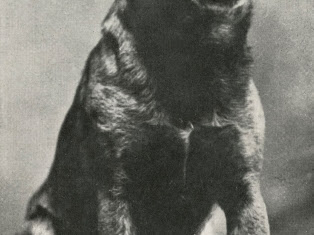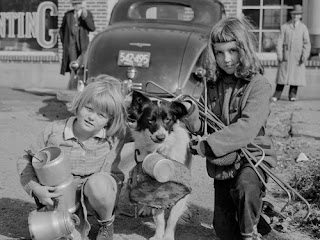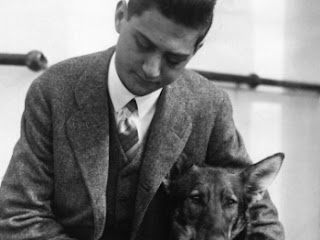Faith, a dog with only two legs, has definitely made history with her amazing defeat and kind soul.
In January of 2003, 17 year old Reuben rescued a three week old puppy from underneath it's mother just in the nick of time before the mother could smother her. The mother dog knew something was wrong with her puppy and the chances of her surviving was almost impossible. She was right. There was something wrong with her, but incredibly the little dog did survive because of the love and care she received from Reuben, his sisters and his mother Jude Stringfellow. The dog was given the name Faith.
Faith was born with two fully developed hind legs and only one front leg which was deformed. Veterinarians advised that the puppy be euthanized, but the family refused. At seven months old, the doctors removed the front leg that was gradually wasting away.
Reuben and his family were determined to help the little dog survive, and to survive meant getting her chin and chest up off the ground to prevent skin breakdown. Using peanut butter as an incentive to lift her chin and body, and help from the family's corgi who would nip at the dog's heels to encourage movement, they were able to teach the two-legged dog how to hop on her hind legs. But, it was Faith who taught herself to walk.
Inspired by her son who went on to serve his country in Iraq, Ms Stringfellow knew Faith would be perfect as an inspiration to soldiers coming home from the war, especially those who lost limbs. According to her "She [Faith] shows what can be achieved against the odds." The two often traveled to hospitals, airports and other places to meet the injured or returning soldiers. Faith did wonders in helping so many soldiers, so much that she was made an honorary E5 Sergeant in the U.S. Army in 2006 - four thousand soldiers attended the ceremony.
In addition to helping the soldiers, Faith participated in a kids' reading program. She gained celebrity status for helping so many and appeared regularly on talk shows, including Oprah who said the two-legged dog was one of her favorite guests.
As Faith reached her senior years, walking was becoming painful despite a healthy diet, joint supplements and pain medicine. When the pain seemed to be too much for her, Ms Stringfellow decided to have her put down peacefully in 2014, saying "She is with Jesus now, and is forever ever evermore running on four perfectly formed and beautiful legs." Faith was almost twelve years old.
Oprah's interview with Faith

















